Results 6,581 to 6,590 of 12089
Thread: Anandtech News
-
01-03-17, 08:14 PM #6581
Anandtech: Dell Releases The XPS 13 2-in-1 Convertible Ultrabook: Infinity Utility
Today Dell launched a new product in its XPS lineup, building on the success of the XPS 13 Ultrabook. The new XPS 13 2-in-1 laptop offers much of the same experience of the Infinity Display XPS 13 notebook, but with the added utility of a 360° hinge.
The convertible notebook category has been one of the bright spots in the PC industry as of late, and Dell has had many entrants into this field, but going with the Infinity Display based XPS 13 as a basis is certainly a great looking take on this product category. It’s built out of the same brushed aluminum and carbon fibre as the clamshell XPS 13, and it keeps the same 13.3-inch IGZO IPS display offerings as well. The base model comes with a 1920x1080 panel, and there is also a 3200x1800 version. The lower resolution model will increase battery life, but for those that like sharp images, the 276 pixels per inch is tough to ignore. There is no UHD offering, but on a smaller notebook like this, 3200x1800 is likely enough without seriously taxing the power requirements.
The original XPS 13 set new records for battery life, and the 2-in-1 promises to live up to those lofty goals. Dell is claiming up to 15 hours of battery life out of the 46 Wh battery when doing productivity tasks, or 13 hours streaming Netflix. This is helped along very much by the inclusion of Intel Core Y series processors, which have a maximum TDP of 4.5-Watts. There are both Core i5-7Y54 and Core i7-7Y75 processor choices.
The base model comes with 4 GB of LPDDR3 1866 MHz memory, and on Dell.com you can also find an 8 GB model. Dell offers 128/256/512 GB PCIe storage options as well, and they are using the Intel 8265 802.11ac wireless card on this model, rather than the Killer NIC found on the normal XPS 13.
Dell has gone all USB-C on this model, with two USB-C ports on the notebook, as well as Thunderbolt 3. They’ve also kept some other IO as well, including a micro SD card slot, and a headset jack. For those that need USB A ports, Dell has included an adapter in the box.
The XPS 13 also has support for an active digitizer, and they offer a pen with 2048 levels of sensitivity, joining the growing number of devices that support Windows Ink. They also support Windows Hello with a built-in fingerprint reader.
Convertible notebooks can be a problem if they get too large, and too heavy, but the XPS 13 2-in-1 does a decent job keeping slim, with an 8-13.7 mm thick chassis (0.32-0.54) and weighing 1.24 kg (2.7 lbs).
The one side effect of Dell’s Infinity Display is the poor placement of the webcam, and that’s still an issue with this notebook. The good news is you can flip it into tent mode if necessary, but for heavy users of webcams, this may not be ideal.
Overall, the XPS 13 2-in-1 looks like a great addition to the XPS lineup, and offers a nice choice for a thin and light convertible. The Y series CPUs should mean that its fanless, and clamping the TDP raises the efficiency quite a bit. This space is getting very crowded with great devices, but it’s hard to complain about that.
The new Dell XPS 13 2-in-1 is available to order now, starting at $999.
Source: Dell
Gallery: Dell Releases The XPS 13 2-in-1 Convertible Ultrabook: Infinity Utility



More...
-
01-04-17, 01:53 AM #6582
Anandtech: NVIDIA Launches GeForce GTX 1050 TI & GTX 1050 For Laptops
With CES kicking off this week, we have a spate of laptop-related announcements. As Intel is launching their Kaby Lake quad core (4+2) SKUs for laptops, so too are new video cards are being launched to use in those systems. To that end, today NVIDIA is taking the wraps off of their latest mobile video cards, the GTX 1050 Ti and GTX 1050 for laptops.
As you might recall from last summer, NVIDIA has reworked how they are positioning and promoting their laptop products starting with the GeForce 10 series. Rather than having separate laptop SKUs with their own (lower) specifications, the 10 series’ SKUs all have (nearly) the same specifications as their laptop counterparts. This means that the launch of most laptop parts has been shifted to something of a formality – we already know roughly what their specifications will be – but it still marks an important milestone for NVIDIA and their customers as these laptop parts finally become available.
To that end, NVIDIA and their partners are launching the laptop versions of the GeForce GTX 1050 Ti and GTX 1050. The original desktop versions of these parts were launched back in late October, built using NVIDIA’s GP107 GPU. The successor to NVIDIA’s now-venerable GM107 that kicked off the Maxwell generation, GP107 is NVIDIA’s mainstream performance, high-volume GPU. And GTX 1050 Ti and GTX 1050 in turn are the formal SKUs that will be the backbone of a number of mainstream gaming-capable laptops.
Looking at the individual SKUs, the GTX 1050 Ti for laptops will be the full-fledged GP107 SKU. It ships with all 6 SMs enabled, for a total of 768 CUDA cores, just like its desktop counterpart. On the clockspeed front, officially it can boost up to 1620MHz; surprisingly this is some 228MHz (16%) higher than the desktop part it’s based on. NVIDIA has already played with the clockspeeds of some of the other laptop SKUs, so that it doesn’t match the desktop clockspeed isn’t unexpected, however this is the first time we’ve seen the clockspeeds increase like this.NVIDIA Laptop GPU Specification Comparison GTX 1060 GTX 1050 Ti GTX 1050 GTX 960M CUDA Cores 1280 768 640 640 Texture Units 80 48 40 40 ROPs 48 32 16 16 Core Clock 1404MHz 1493MHz 1354MHz 1097MHz Boost Clock 1670MHz 1620MHz 1493MHz Undefined Memory Clock 8Gbps GDDR5 7Gbps GDDR5 7Gbps GDDR5 5Gbps GDDR5 Memory Bus Width 192-bit 128-bit 128-bit 128-bit VRAM 6GB 2GB/4GB 2GB/4GB 4GB FP64 1/32 1/32 1/32 1/32 GPU GP106 GP107 GP107 GM107 Transistor Count 4.4B 3.3B 3.3B 1.87B Manufacturing Process TSMC 16nm Samsung 14nm Samsung 14nm TSMC 28nm Launch Date 08/16/2016 01/03/2017 01/03/2017 03/12/2015
Unfortunately I don’t have a good answer right now to explain the difference. GP107 is something of a special chip to begin with – it’s the only Pascal chip made over at Samsung on their 14nm process – so it already throws out part of the rulebook. NVIDIA of course bins parts for laptop/desktop usage, so it may just be that the better chips being held back for laptops can clock so much higher, or it could be that Samsung is producing better chips since the initial batches that defined the desktop launch a few months ago.
Either way laptop clockspeeds are a lot more variable from product-to-product regardless: the design of a laptop’s cooling system has a lot more to do with sustained clockspeeds than NVIDIA’s formal specifications. NVIDIA for their part doesn’t disclose the TDPs of their laptop SKUs, so it’s impossible to say just how much cooling is required to get close to the GTX 1050 Ti’s peak performance, but it’s likely not too far removed from the desktop part’s 75W TDP.
Moving on, paired up with the GP107 GPU in the GTX 1050 Ti for Laptops will be paired with 7Gbps GDDR5 for VRAM. As is usually the case with laptops, the amount of VRAM is an “up to” specification – in this case up to 4GB – so I’m expecting we’ll see both 2GB and 4GB laptops. This in turn is running on GP107’s 128-bit memory bus, so we’re looking at 112GB/sec of memory bandwidth.
Also launching alongside the GTX 1050 Ti for Laptops is its lower-end sibling, the GTX 1050 for Laptops. As with the desktop part, this is a GP107 SKU with 5 of 6 SMes enabled, trading off about 17% of the shading/texturing/geometry hardware in exchange for lower prices. However past this point, it more significantly diverges from both its desktop counterpart and faster laptop sibling. NVIDIA has disabled half of the ROPs, leaving it with 16 ROPs instead of the full 32 ROPs found on GP107. To date this is the second time NVIDIA has shipped a GeForce 10 series for Laptops part with a different core configuration, and the first time that modification has been the ROPs (and is why we say laptop parts are configured similarly to their desktop counterparts).
GTX 1050 for Laptops has a low enough SM count that I’m not fully sure what the impact is of disabling half the ROPs, as the ROPs likely weren’t always being fed to begin with. At the same time, NVIDIA has never done something quite like this before, as GTX 1050 retains its 1MB of L2 cache, something that doesn’t usually happen when ROPs are disabled. So this isn’t something that can be logically reasoned out, and we’ll have to see what the benchmarks find. However I think it’s safe to say that it will certainly drive a larger wedge in performance between GTX 1050 Ti and GTX 1050 than what we’ve seen on the desktop side.
In any case, unlike the GTX 1050 Ti, this SKU is going to be clocked much closer to its desktop counterpart, coming in at 1493MHz for the boost clock (~2.5% higher). On paper then, GTX 1050 for Laptops can deliver about 77% of GTX 1050 Ti for Laptops’ shader/geometry throughput, or 46% of its ROP throughput.
As for memory, things are unchanged from the GTX 1050 Ti. This means “up to” 4GB of GDDR5, running at 7Gbps.
Overall, given that these SKUs are meant to replace GM107 in so many designs, I’m very interested in seeing just what the real-world performance uplift is. Replacing the 3 year old GM107, GTX 1050 Ti for Laptops enjoys a significant clockspeed, ROP, and SM count advantage over parts like the GTX 950M/960M, so there’s quite a bit of potential, possibly more than we’ve seen in the desktop. Which if GP107 ends up being a major backbone part for midrange laptops like GM107 was for the past few years, would be very welcome news.
Wrapping things up, like the rest of the GeForce 10 series for Laptop parts, the new GTX 1050 series parts gain access to NVIDIA’s full laptop feature set. This includes the latest iteration of Battery Boost, G-Sync support (something that might be especially useful for these lower-performance parts), and overclocking support. As for laptops featuring these new video cards, NVIDIA’s partners will be shipping laptops with them this quarter – some as early as this week – and already several have been announced here at CES. Final pricing will vary by laptop, but broadly speaking, NVIDIA expects GTX 1050 for Laptops equipped systems to start at $699.
More...
-
01-04-17, 06:19 AM #6583
Anandtech: Hands On With the Huawei Honor 6X
Last year at CES, Honor announced a new mid-range smartphone, the Honor 5X, for the US market that aimed to bring premium smartphone features to a lower price point. The SoC and display were in line with expectations given the price, but it also had an aluminum unibody design, a fairly good camera, and a fingerprint scanner that, at the time, were mostly seen in high-end designs costing ~600 USD rather than ~250 USD.
This year at CES 2017, Huawei announced that it’s bringing the Honor 6X to the US, which includes several improvements over its predecessor. It still uses an aluminum unibody construction, but it feels much more sturdy than the Honor 5X, giving it a more premium feel. The rounded corners and sides make it comfortable to hold, but also a little slippery when combined with the sandblasted finish.

The Honor 6X still uses plastic RF windows along the top and bottom on the back, like so many other Huawei designs. The plastic has a similar texture to the metal back, but the color is a little off, interrupting the smooth lines and otherwise attractive design.
The capacitive fingerprint sensor on the back supports EMUI’s “touch and hold” and slide gestures, which allow you to optionally snap a photo, answer a call, or stop an alarm by holding a finger to the sensor. Sliding a finger vertically across the sensor lowers and raises the notification shade.

There’s a single-piece volume rocker and power button on the right edge that give a decent click when pressed, and there’s a 3.5mm headphone jack and noise cancelling microphone on the top edge. It’s a bit puzzling to see a microUSB port on the bottom as USB Type-C is pretty ubiquitous at this point. To its right is the single downward firing speaker.

The entire front is covered in glass, which is slightly bevelled along the edges. A plastic screen protector comes pre-applied, although it does not reach all the way to the edges. The 5.5-inch 1080p IPS LCD display has a standard sRGB color gamut and a rather cool white point that gives the screen a blue tint. Huawei lists the peak brightness at 450 nits.
Inside is a Kirin 655 SoC paired with either 3GB or 4GB of LPDDR3 RAM. It’s interesting to note how Huawei is becoming more vertically integrated, using its Kirin SoCs in more of its products. With eight Cortex-A53 CPU cores and a 16nm FinFET process, the Kirin 655 should provide good power efficiency.Huawei Honor 6X Huawei Honor 5X SoC HiSilicon Kirin 655
4x Cortex-A53 @ 2.1GHz
4x Cortex-A53 @ 1.7GHz
Mali-T830MP2Qualcomm Snapdragon 616
4x Cortex-A53 @ 1.5GHz
4x Cortex-A53 @ 1.2GHz
Adreno 405RAM 3GB / 4GB LPDDR3-1866 2GB LPDDR3-1600 NAND 32GB / 64GB (eMMC 5.1)
+ microSD16GB (eMMC 4.51)
+ microSDDisplay 5.5-inch 1920x1080 IPS LCD 5.5-inch 1920x1080 IPS LCD Dimensions 150.9 x 76.2 x 8.2 mm
162 grams151.3 x 76.3 x 8.15 mm
158 gramsModem HiSilicon Balong (Integrated)
2G / 3G / 4G LTEQualcomm X5 (Integrated)
2G / 3G / 4G LTE (Category 4)SIM Size 2x NanoSIM 1x NanoSIM, 1x MicroSIM
(dual standby)Front Camera 8MP, 1/4" Sony IMX219 Exmor R, f/2.0 5MP, 1/4" OmniVision OV5648, 1.4 µm pixels, f/2.4 Rear Camera Primary:
12MP, 1/2.9” Sony IMX386 Exmor RS, 1.25µm pixels, f/2.2, PDAF, HDR, LED flash
Depth:
2MP, 1/5” OmniVision OV2680, 1.75µm pixels13MP, 1/3.06” Sony IMX214 Exmor RS, 1.12µm pixels, f/2.0, AF, HDR, LED flash Battery 3340 mAh
non-replaceable3000 mAh (11.4Wh)
non-replaceableConnectivity 802.11b/g/n (2.4GHz), BT 4.1, GPS/GNSS, microUSB 2.0 802.11b/g/n (2.4GHz), BT 4.1, GPS/GNSS, microUSB 2.0 Launch OS Android 6.0 with EMUI 4.1 Android 5.1.1 with EMUI 3.1
Internal storage gets a boost from 16GB in the Honor 5X to either 32GB or 64GB, which can be expanded with a microSD card. The 6X also gets an 11% larger battery, but unfortunately the wireless connectivity remains the same, only supporting up to 2.4GHz 802.11n Wi-Fi.
On the camera side of things, the 12MP rear camera has slightly larger pixels than most phones in this segment, and also adds some neat features like PDAF that are generally only seen in higher-end devices. The depth camera is nothing particularly special here and as a result the setup looks a lot like the HTC One M8 from previous generations, especially when it comes to background defocus performance as the accuracy with which it does the background blur and how it handles progressive defocus is not particularly clean. Thankfully unlike the Honor 5X which had a fairly low frame rate preview the Honor 6X does a lot better here and has much better focus thanks to the addition of PDAF. It's also fairly obvious that the luminance noise reduction is fairly aggressive here but we'll have to see just how much of a problem it really is with a full review.
The Honor 6X will be available in gold, gray, and silver with a few different memory and storage configurations. The 3GB version, which starts at $249.99, will be available for pre-order in the US on January 4 and will begin shipping January 15. It will also be available in France, Germany, Italy, Spain, United Kingdom, the Netherlands, Russia, Malaysia, the United Arab Emirates, and Saudi Arabia starting January 4 for 249 EUR. The 4GB version won’t be available until later in the first quarter and will cost $299.99 or 299 EUR.
More...
-
01-04-17, 09:57 AM #6584
Anandtech: LaCie Launches Rugged and d2 Thunderbolt 3 Storage Devices
LaCie at CES introduced its new storage devices with Thunderbolt 3 interface. The new LaCie Rugged Thunderbolt USB-C and the LaCie d2 Thunderbolt 3 support 2.5” and 3.5” storage devices, use Intel’s DSL6540 Thunderbolt 3 chips and can expand storage capacities of contemporary PCs up to 10 TB.
The LaCie Rugged Thunderbolt USB-C: 500 GB to 5 TB Capacity, TB3 Compatibility
The LaCie Rugged Thunderbolt USB-C drives can be connected to almost any modern computer with a USB 3.0 Type-A, USB 3.0 Type-C and Thunderbolt 3 ports using a USB or a TB cable. Furthermore, the drives feature previous-generation Thunderbolt connectors to maintain compatibility and offer high performance with systems like Apple’s Mac Pro. The LaCie Rugged Thunderbolt USB-C will be available in two versions: the thinner one will support SSDs and HDDs up to 1 TB and 2 TB respectively, another is for 2.5"/15 mm HDDs and will use Seagate BarraCuda HDDs with 4 or 5 TB capacity. When it comes to performance, the SSD-based Rugged Thunderbolt USB-C will offer a maximum read speed of up to 510 MB/s, whereas HDD-based drives will offer up to 130 MB/s transfer rates.
Traditionally, the LaCie Rugged drives come in IP54-rated white and orange enclosure that protects against shocks, dust and water. In addition, the drives support AES-256 software encryption.LaCie Rugged Thunderbolt USB-C Capacity Model Number Thickness Width Depth Weight 500 GB STFS500400 0.984in
25mm3.5in
88.9mm5.516in
140.1mm0.882lb
0.4kg1 TB STFS1000401 2 TB Apple STFS2000800 2 TB STFS2000400 4 TB Apple STFS4000800 1.339in
34mm3.579in
90.9mm5.843in
148.4mm1.323lb
0.6kg4 TB STFS4000400 5 TB Apple STFS5000800 5 TB STFS5000400
The new LaCie Rugged Thunderbolt USB-C drives will be available this quarter starting at $249.99.
Gallery: The LaCie Rugged Thunderbolt USB-C: 500 GB – 5 TB Capacity, TB3 Compatibility





The LaCie d2: Up to 10 TB Capacity, TB3 Compatibility
The LaCie d2 are a bit less flexible storage devices compared to their rugged brethren when it comes to compatibility (they do not feature older Thunderbolt connectors), but they offer higher capacities and higher performance compared to HDD-based versions of the Rugged Thunderbolt USB-C.
The LaCie d2 drives pack Seagate’s BarraCuda 3.5” HDDs with 6, 8 and 10 TB capacities (so, the top-of-the-range model is helium-filled), come with a Thunderbolt 3 interface only and are compatible with systems featuring TB3, USB 3.1/3.0 Type-C and USB 3.0 Type-A ports (with an appropriate adapter). The LaCie d2 feature two TB3 headers and can be daisy-chained with other TB3-supporting devices. When it comes to performance, the high-end model offers up to 240 MB/s data rate, the more affordable devices will be a little slower.LaCie Rugged Thunderbolt USB-C Capacity Model Number Thickness Height Depth Weight 6 TB STFY6000400 2.362in
60mm8.543in
217mm5.118in
130mm4.85lb
2.2kg8 TB STFY8000400 10 TB STFY10000400
Since the d2 drives use premium BarraCuda HDDs, they are backed by a five-year warranty. As for the pricing, it starts at $429.99 for a 6 TB model.
Gallery:
More...
-
01-04-17, 09:57 AM #6585
Anandtech: Patriot Introduces LX 256 GB microSDXC Card with Class 10, U3 Certificatio
Patriot has announced its new high-capacity microSDXC card that can store 256 GB of data. The cards not only feature leading-edge capacity, but also support up to 80 MB/s write speed, which is believed to be enough for shooting videos in UHD resolutions.
The new Patriot LX microSDXC card with 256 GB capacity is based on 3D NAND memory, uses the UHS bus and is qualified for sequential read speeds of up to 90 MB/s and sequential write speeds of up to 80 MB/s. The card carries Class 10 and U3 labels (meaning that its performance does not drop below 30 MB/s), but for some reasons is not certified for any V ratings despite the fact that Patriot positions it for shooting 4K UHD and FHD videos.
Patriot is among the first independent suppliers of memory cards to introduce a 256 GB microSDXC memory card. Samsung and SanDisk announced their microSDXC products with 256 GB capacity in mid-2016, but both companies produce their own NAND flash and have access to leading-edge chips. Patriot does not say what kind of memory it uses for its LX-series 256 GB cards, but if the company can buy such NAND ICs, other makers will be able to do the same as well. Therefore, expect more 256 GB microSDXC cards to hit the market shortly.Patriot LX micro SDXC 256 GB Card Specifications Write Speed 80 MB/s Read Speed 90 MB/s NAND Type 3D NAND SDA Labels UHS-I, U3, Class 10
Patriot’s LX microSDXC cards are backed by a two-year warranty and will be available shortly for $199.99 in the U.S.
More...
-
01-04-17, 11:14 AM #6586
Anandtech: Amped Wireless Launches AC2200 HELIOS Family with Qualcomm's Tri-Radio 802
At Computex 2016, Qualcomm Atheros announced the availability of a tri-radio 802.11ac platform with Wave 2 MU-MIMO capabilities. The firmware in the platform also supported Wi-Fi SON (Self-Organizing Networks), which is fast becoming an essential requirement in mesh networks. The announcement had a quote from Amped Wireless, indicating support for the new platform. We were expecting their mesh system - ALLY - to ship with that platform, but the ALLY had no dedicated backhaul channel to provide the best possible performance. Instead, Amped Wireless has chosen CES 2017 to announce the first set of products based on the Qualcomm tri-radio platform - the HELIOS family.
At the heart of the Qualcomm announcement was a highly integrated network processor SoC, the IPQ40x9. It integrates two 2x2 radios. While one radio is always set to operate in the 5 GHz band, the other one can be configured in either 2.4 or 5 GHz mode. The SoC also includes a PC interface to further connect additional radios. The Qualcomm announcement included two platforms:
- AC2200 class of products with a 2x2 802.11ac radio such as the QCA9886 connected to the PCIe interface (resulting platform has a 2x2 2.4 GHz radio (400 Mbps with 256QAM) and two 2x2 5 GHz radios (866 Mbps + 866 Mbps))
- AC3000 class of products with a 4x4 802.11ac radio such as the QCA9984 connected to the PCIe interface (resulting platform has a 2x2 2.4 GHz radio (400 Mbps with 256QAM), a 2x2 5 GHz radio (866 Mbps) and a discrete 4x4 5 GHz radio (1733 Mbps))
The HELIOS family (a HELIOS router and a HELIOS-EX extender) adopt the AC2200 platform. The router operates with two 5 GHz SSIDs and one 2.4 GHz SSID, with traffic allowed to be spread across the bands. The extender, on the other hand, uses one of the 5 GHz bands as a dedicated backhaul to connect to the main router (in that way, it is similar to the Orbi's backhaul connection - except that it is 2x2 instead of the Orbi's 4x4). Amped Wireless has given the tag 'DirectLink' to this dedicated backhaul connection.
Gallery: Amped Wireless RTA2200T HELIOS High-Power Tri-Band AC2200 Wi-Fi RouterThe HELIOS-EX (RE2200T) and the HELIOS router (RTA2200T) will have a MSRP of $180. The extender is slated to become available in February 2017, while the router will make its entry towards the end of this quarter.


Gallery: Amped Wireless RE2200T HELIOS-EX High-Power Tri-Band AC2200 Wi-Fi Range Extender



More...
-
01-04-17, 11:14 AM #6587
Anandtech: G.Skill Announces Trident Z DDR4 DIMMs for Kaby Lake CPUs
G.Skill on Wednesday introduced its new high-end DDR4 memory modules tested for compatibility with Intel’s new Core processors featuring the Kaby Lake microarchitecture. The new Trident Z modules come in 8 GB and 16 GB sizes and are rated for operations at data rates beyond 3600 MT/s per pin.
For Intel’s Kaby Lake and Z270 launch, G.Skill now offers various dual-channel kits with 16 GB (2×8 GB), 32 GB (4×8 GB, 2×16 GB) and 64 GB (4×16 GB) capacities designed to run in DDR4-3600, DDR4-3866, DDR4-4000, DDR4-4133 and DDR4-4266 modes at 1.35 V or 1.4 V (the top-of-the-range kit only). Due to rather high data rates, the new Trident Z kits come with rather looser CL17, CL18 or even CL19 timings. The modules support XMP 2.0 technology that simplifies setting of correct sub-timings on platforms that support this feature.
For about a year now G.Skill has been using Samsung’s 8 Gb B-die ICs for its high-end DDR4 memory modules. Keeping in mind that companies tend to be cautious with new platforms and memory controllers, it is not surprising that the new DIMMs designed for the brand new CPUs are based on familiar chips made using 20 nm process technology.
Initially G.Skill will offer Kaby Lake-optimized memory modules with its regular aluminum heat spreaders, but eventually the company will expand the lineup with DIMMs featuring RGB lighting and other enhancements.G.Skill's Memory Modules Designed for Intel's Kaby Lake Platform Speed CL Timing Voltage Kit Configuration Kit Capacity DDR4-3600 CL17 19-19-39 1.35 V 2×16 GB
4×16 GB32 GB
64 GBDDR4-3866 CL18 19-19-39 2×8 GB
4×8 GB16 GB
32 GBDDR4-3866 CL18 18-18-38 2×16 GB 32 GB DDR4-4000 CL18 19-19-39 2×8 GB
4×8 GB16 GB
32 GBDDR4-4133 CL19 19-19-39 2×8 GB 16 GB DDR4-4133 CL19 21-21-41 4×8 GB 32 GB DDR4-4266 CL19 19-19-39 1.4 V 2×8 GB 16 GB
G.Skill has tested its new memory modules (DDR4-4133 32 GB kit to be exact) on the ASUS ROG Maximus IX Formula motherboard and the Intel Core i5-7600K processor to ensure compatibility with the new CPUs, but everything should work on other Kaby Lake/Z270 configurations that plan to support high speed memory.
Newegg already sells G.Skill’s Kaby Lake-optimized 16 GB DDR4-4266 memory kits (F4-4266C19D-16GTZ series) for $229.99. Other modules will hit the market shortly from now and more retailers will follow.
More...
-
01-04-17, 12:51 PM #6588
Anandtech: ZOTAC Readies External GPU Enclosure: TB3, 400 W PSU, Due in Q2 2017
ZOTAC plans to demonstrate a prototype of its external GPU enclosure at CES this week. The eGFX chassis from ZOTAC will target notebooks, AIO and SFF PCs with Thunderbolt 3 interface, will integrate a 400 W power supply and provide additional USB ports. The device will hit the market several months from now and its final specifications are still to be determined.
ZOTAC is the sixth company to announce an eGFX enclosure with Thunderbolt 3 interface, so the market of such devices seems to be getting crowded (and we expect several more companies to introduce their eGFX solutions too). Apart from ultra-thin laptops with a TB3 port (and support of eGFX through BIOS and TB3 firmware), the usual target market for this kind of devices, ZOTAC is going to position its external GPU chassis as a solution to upgrade its upcoming SFF ZBOX PCs featuring Thunderbolt 3 interface with high-end external graphics cards.
At present, ZOTAC’s external graphics dock (the company does not have a brand for this product just yet, so it uses a neutral name for now) is still in development, which is why the manufacturer shares only the basic details about this device. Just like competing eGFX boxes, ZOTAC’s chassis will feature one Thunderbolt 3 port (40 Gbps) outside and one PCIe x16 electrical slot inside (operating in PCIe x4 mode, of course). As for power, it will integrate a 400 W PSU in a standard form-factor (it is unclear whether we are dealing with a shortened ATX or an SFX PSU here) that will power the video card inside. As Thunderbolt 3 can transfer up to 100 W of power, the same PSU could also power a notebook or even a miniature PC. The enclosure looks spacy enough for additional fans, but ZOTAC does not say how many of them will be pre-installed in the final product. In any case, a 400 W PSU and an additional cooler are going to provide certain potential for GPU overclocking for those who need it.
Since many ultra-thin notebooks as well as miniature PCs do not have a lot of spare USB 3.0 ports, ZOTAC’s dock will offer four additional USB 3.0 headers (with one port supporting Quick Charge 3.0). For now, ZOTAC’s dock does not support internal SATA connector for an extra 2.5” storage device (which might be needed to store games, as many PCs do not have capacious SSDs), but remember that the eGFX chassis is still in development.ZOTAC eGFX Chassis Preliminary Specifications Max Video Card Size Double-Wide, 12.2" Long
(312 × 170 × 44 mm)Max Video Card Power over 300 W Connectivity 1 × Thunderbolt 3 (~40 Gbps via active cable) Chassis Size Unknown for now, but enough to accomodate a FLFH graphics card Internal PSU 400 W (80 Plus Gold?) Cooling Integrated fans
GPU cooling systemExtras 3 × USB 3.0 ports
1 × USB 3.0 port with Quick ChargeSystem Requirements Thunderbolt 3 eGFX Certified PC
Thunderbolt 3 w/Active Cable (included)
Windows 10Compatible Graphics Cads AMD Radeon RX-series and later
NVIDIA GeForce GTX 10-series and laterShipping Date Q2 2017 Price Unknown
At CES, ZOTAC plans to demonstrate its external graphics dock in action, therefore, things like electronics and firmware of the product are ready and everything works. The final product may be a little bit different than the one showcased at the trade show, but not radically (it may get LED lighting, grill instead of glass on the side, etc.).
At present, ZOTAC’s eGFX chassis is a work in progress and at least some of its specifications have not been finalized, which is why the company cannot announce its pricing. Right now, the manufacturer targets Q2 as the launch timeframe, so, we will have to wait a little bit for both the final specs and MSPR.Comparison of Thunderbolt 3 eGFX Chassis ASUS ROG XG Station 2 AKiTiO
NodePowerColor
Devil BoxRazer
CoreZOTAC
eGFX DockChassis Dimensions Length 45.6 cm
17.95 in42.8 cm
16.85 in40 cm
15.748 in34 cm
13.38 inunknown Height 27.8 cm
10.94 in22.7 cm
8.94 in24.2 cm
9.52 in21.84 cm
8.6 inWidth 15.8 cm
6.22 in14.5 cm
5.71 in17.2 cm
6.77 in10.5 cm
4.13 inMax Dimension of Compatible Graphics Card Length 31.2 cm
12.2 inHeight
(PCB+Cables)over 14 cm
over 5.51"17 cm
6.7 in14 cm
5.51 in15.2 cm
5.98 in14 cm (?)
5.51 in (?)Width 4.4 cm
1.73 in5
1.96 in4.4 cm
1.73 in4.4 cm
1.73 inMaximum GPU Power 500 W (?) 300 W (?) 375 W 300+ W (?) PSU Wattage 600 W 400 W 500 W 400 W Form-Factor internal proprietary SFX internal proprietary internal Cooling Fans (mm) 3 × 80 120 unknown 3 × 80 present Connectivity Thunderbolt 1 × TB3 1 × TB3 1 × TB3 Ethernet 1 × GbE - 1 × GbE - USB 4 × USB 3.0
1 × USB-B- 4 × USB 3.0 4 × USB 3.0 SATA 1×SATA 6Gb/s - 1×SATA 6Gb/s - DisplayPort - - - Availability 1/2017 12/2016 10/2016 4/2016 Q2 2017 Price $? $299 $379 $499 $?
Gallery: ZOTAC Readies External GPU Enclosure: TB3, 400 W PSU, Due in Q2 2017





Related Reading:
- ZOTAC Announces GeForce GTX 1080 for Mini-ITX PCs
- ZOTAC Launches GeForce GTX 1070 Mini for Mini-ITX PCs
- ASUS ROG XG Station 2 eGFX Enclosure with Thunderbolt 3 Launched
- AKiTiO Introduces Node: Thunderbolt 3 eGFX Box for $299
- PowerColor Announces Devil Box: Thunderbolt 3 eGFX Enclosure
- Razer Core Thunderbolt 3 eGFX Chassis: $499/$399, AMD & NVIDIA, Shipping In April
- More on AMD’s XConnect Tech: Thunderbolt 3 for External Radeons
More...
-
-
01-04-17, 03:05 PM #6590
Anandtech: FLIR One Thermal Imager Gets an Update, New Infrared Cameras with Lepton I
Over the last couple of years, thermal imaging has become more accessible to the average consumer due to development of low-cost infrared sensors / microbolometers. FLIR was one of the first to make a breakthrough in this segment with the low-cost Lepton sensor. The first version with a resolution of 80x60 was introduced to the market in the FLIR One Thermal Imager for iPhone 5/5s. After a year, FLIR added a 160x120 version to the Lepton portfolio, and also used it in the second-generation FLIR One Thermal Imager (separate versions for Android and iOS). The first-generation Lepton sensor also found a place in the CAT S60 rugged smartphone.
At CES 2017, FLIR is launching five different infrared cameras, all of which are based on sensors belonging to the Lepton family. The five cameras fall into three categories:
- FLIR One family : The third generation FLIR One and FLIR One Pro for Android and iOS
- FLIR Duo and Duo R : Thermal and visible camera combo in a GoPro form-factor, suitable for mounting on drones
- FLIR C3 : Rugged and pocket-sized touchscreen thermal camera for professionals.
The FLIR One and FLIR One Pro are meant to be used in conjunction with a smartphone. They come in two variants - one for iOS (with a Lightning connector), and the other for Android (with a USB Type-C connector). While the FLIR One is meant for the casual user / first-time thermal camera owner, the Pro version is meant for professional use-cases. Both of them feature an adjustable connector to ensure a snug fit against any compatible smartphoe model with or without an installed protective case. The following comparison table brings out the differences between the FLIR One Gen 3 and FLIR One Pro.
The FLIR One Gen 3 and FLIR One Pro are available for pre-order today for $199 and $399 respectively.
The FLIR Duo and Duo R are meant for use with drones. Both of them use the 160x120 resolution Lepton sensor. The availability of a HD video camera in the units ensure that MSX is available (FLIR's proprietary blending of live images with thermal ones to provide more actionable results to the end user). There is a microSD card slot on the cameras, as well as mini-USB and micro-HDMI outputs. Real-time remote control of the camera operations is also possible with a smartphone app communicating over Bluetooth. The camera also integrates with MAVLink-compatible flight controllers.
The Duo R includes radiometry - i.e, the thermal sensor is calibrated to provide more accurate temperature readings (a tolerance of +/-2%, as compared to more than +/-5% with the non-radiometry version). The Duo has a MSRP of $999, while the Duo R retails for $1299. Both models are available for purchase today.
The FLIR C3 is a standalone product meant for professional use-cases where ruggedness is important (such as home inspections and building maintenance). In that respect, it is somewhat similar to the FLIR One Pro smartphone accessory. However, unlike the FLIR One Pro, this is a completely standalone device with its own Wi-Fi radio, 3" touchscreen, and firmware running completely on the processor / microcontroller inside it. Curiously enough, despite the FLIR C3's use of the first-generation Lepton sensor (80x60), it offers full radiometry for a more accurate analysis with FLIR Tools offline. However, it only supports scene temperature range of -10C to 150C, while the FLIR One Pro does -20C to 450C. On the other hand, the thermal sensitivity in the C3 is greater (allowing for detection of subtle temperature variations).
FLIR indicated that these differences could be attributed to the ability to offload some of the processing tasks in the FLIR One Pro to the mobile phone's app processor. The FLIR C3 is slated to become available later this quarter for $699.
It is great to see an increase in the number of thermal cameras using the Lepton sensors. Even though export restrictions put a limit on the video frame rate of these sensors at 9 Hz, it is not an issue for the use-cases that these cameras target.
FLIR's competition for these cameras comes in the form of Seek Thermal's $500 CompactPRO (going directly against the FLIR One Pro) and the $700 RevealPRO (going directly against the FLIR C3). FLIR does have the MSX advantage and undercuts the CompactPRO's price point by $100 for the FLIR One Pro. The FLIR One Pro also comes with the more future-proof USB-C port (though the Seek Thermal's micro-USB port can easily be used with an appropriate USB-C adapter). However, Seek Thermal uses a 320x240 resolution thermal sensor in both of the above products, which is 2-4x more than what the Leptons offer. Additionally, the Seek Thermal units have been shipping for a few months now.
The past couple of years in the thermal imaging market have been quite interesting. It looks likely to continue in the near future with the array of products being brought to the market by FLIR and Seek Thermal.
Gallery: FLIR One Thermal Imager Gets an Update, New Infrared Cameras with Lepton Inbound



More...
Thread Information
Users Browsing this Thread
There are currently 10 users browsing this thread. (0 members and 10 guests)




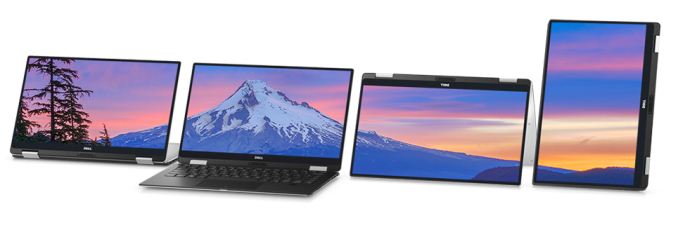

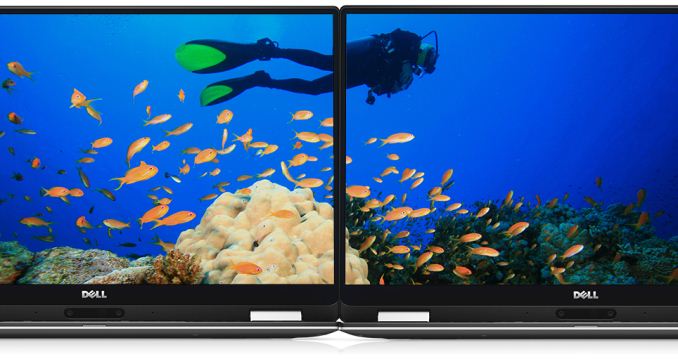
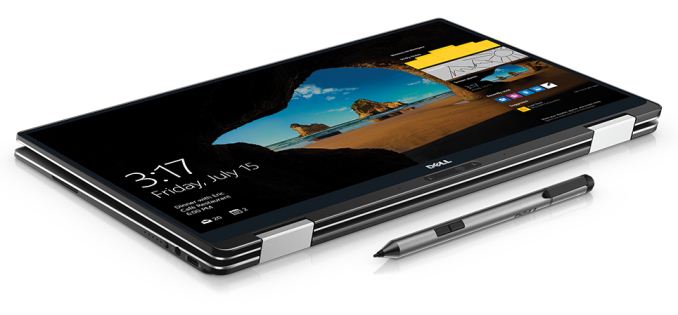

 Quote
Quote
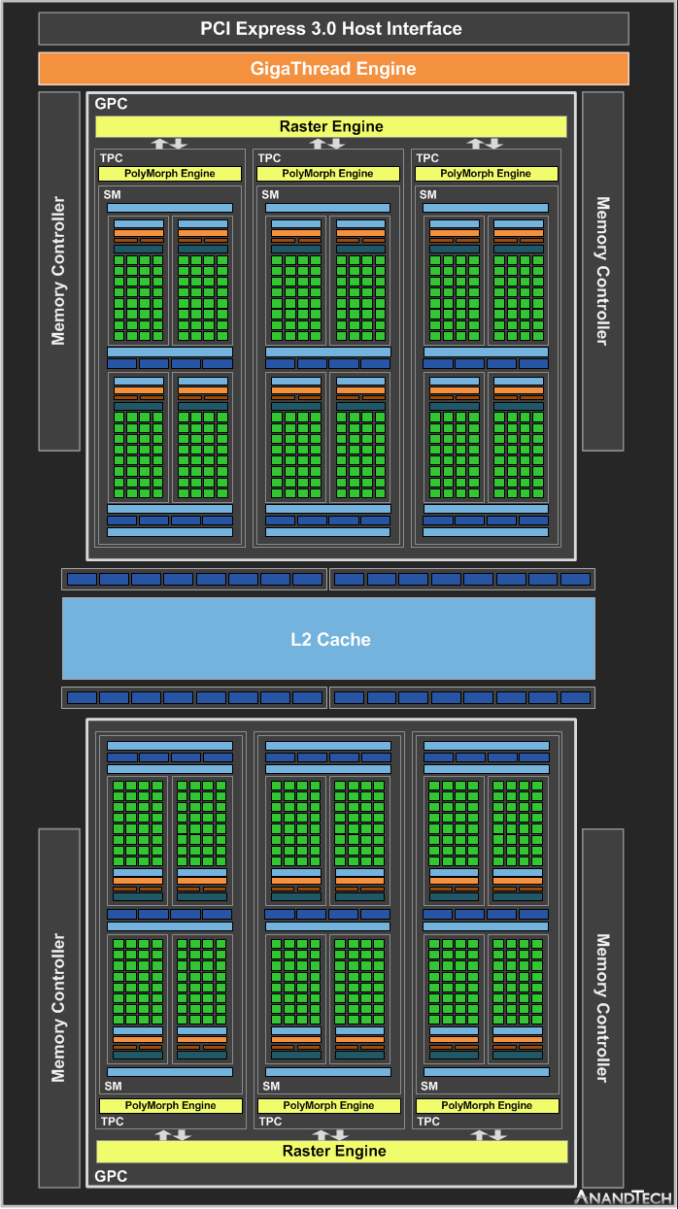




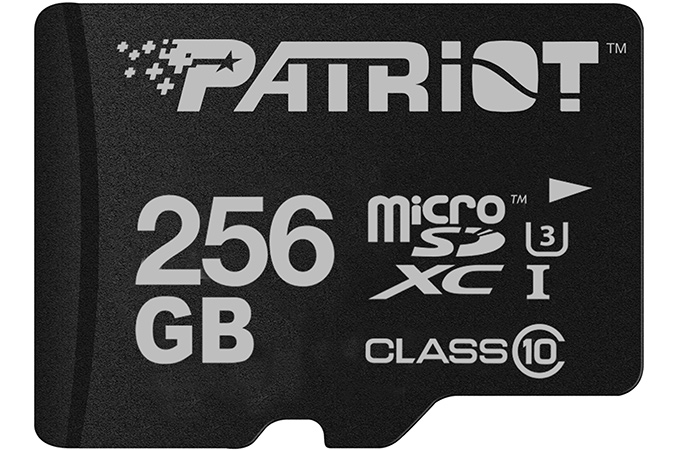

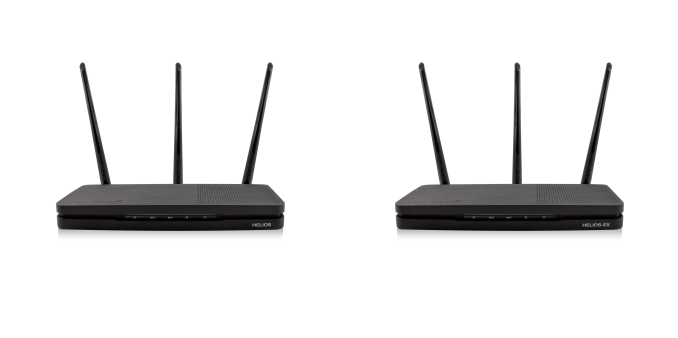
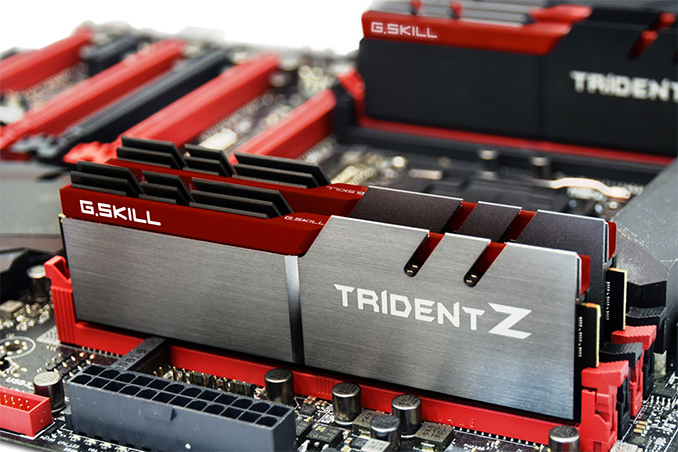

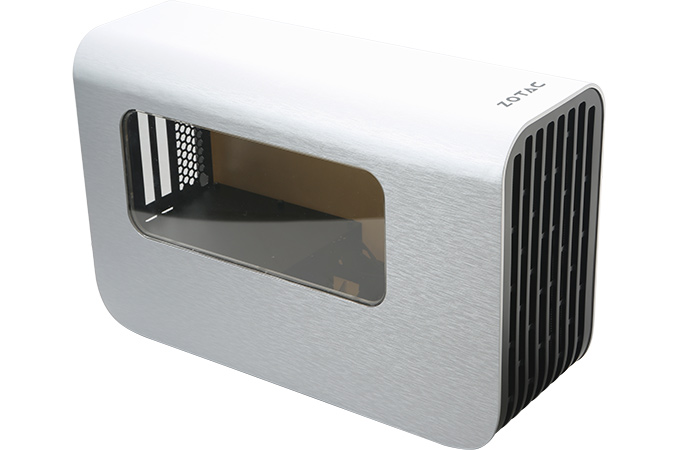

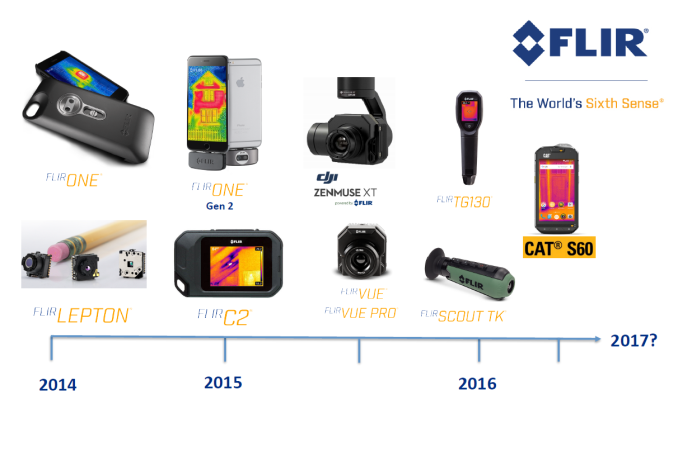
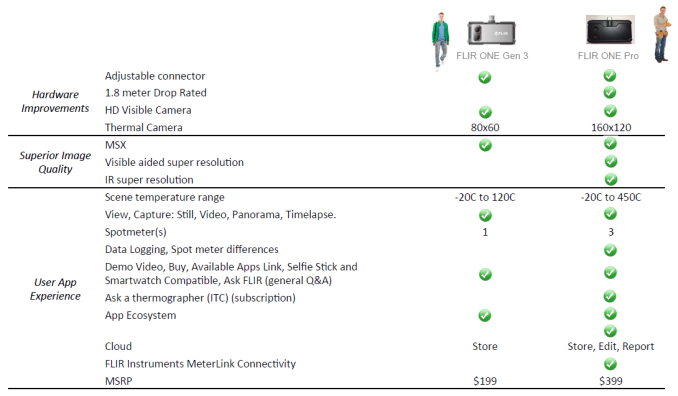
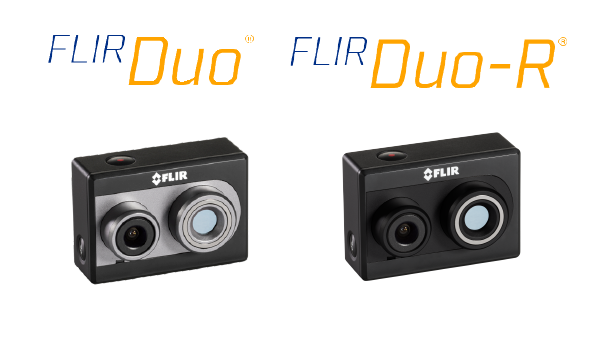
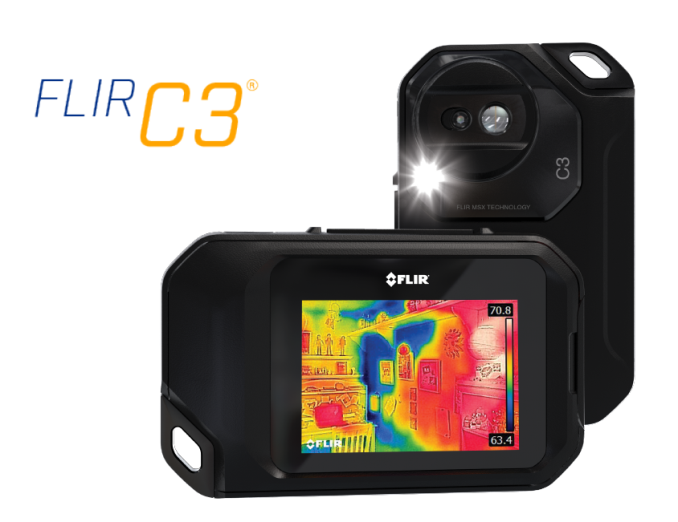
















Bookmarks